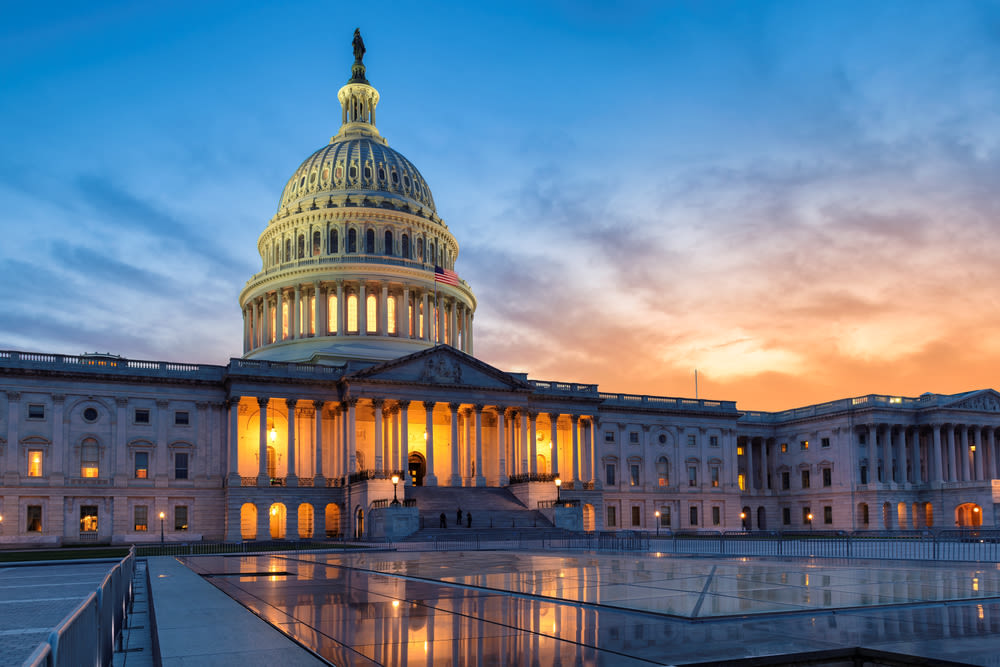Oregon Just Got a Sixth Congressional Seat

A new member of the Oregon congressional delegation will be elected in 2021.
On the national political stage, Oregon doesn’t usually make much noise. We’re too small, our presidential primary arrives extremely late in the game, and we’re mostly too predictable in our votes.
But, on Monday, the state got a taste of being the belle of the ball: Oregon is one of only six states in the country to gain a Congressional seat thanks to population growth, per new numbers from the U.S. Census Bureau.
(The others are Montana, Colorado, Florida, North Carolina and—with two new seats—Texas. States that lost a seat include California, Illinois, Michigan, New York, Ohio, Pennsylvania and West Virginia.)
Casual political observers could be forgiven for chalking this up as an easy win for the Democrats who control virtually all the levels of government in Oregon and, accordingly, welcome news for U.S. House Speaker Nancy Pelosi and her caucus, who control the chamber by only the slimmest of margins. The redistricting advantage nationally belongs to the GOP, which has control of more state legislatures where political maps are typically, though not always, drawn.
But look again: thanks to a logjam-breaking agreement in the Oregon legislature, Democrats and Republicans will have equal say in redistricting for the 2022 election. If they can’t come to an agreement on the federal seats, the courts will draw the map on their behalf. (If there is an impasse over seats in the state legislature, Oregon Secretary of State Shemia Fagan, a Democrat, gets the final say.)
And there’s the rub: As Dave Wasserman, the redistricting wonk for the nonpartisan Cook Political Report laid out via Twitter last week, “compact, partisan-blind" Oregon legislative districts could yield at least a 4-2 breakdown, two seats for Republicans and four for Democrats, up from the 4-1 current distribution. (Wasserman suggests that under redistricting the territory around Eugene, Salem and Corvallis could also go to the GOP, and it is true that Rep. Peter DeFazio, whose district covers the majority of the region, has had some closer than expected races. But population anchors in all three cities, plus the lack of a deep bench for the GOP in the state makes that less likely, though not impossible.)
Most political observers expect that the new seat would likely be added in the fast-growing Portland metro area and its suburbs to the south and west, including most of Washington County. That’s an easy win for Democrats but would also mean that other districts would need to be redrawn to balance population and representation accordingly. And that’s what could result in a district encompassing the southern portion of the state, including portions of Lane County, all of the Medford area and the increasingly conservative Oregon Coast, a tempting GOP target.
Given how few seats Republicans overall would have to win to retake control of the U.S. House of Representatives, Oregon could be in for a taste of that national spotlight in the upcoming election cycle.
As for who will run for the open seat, that’s up in the air until we know more about how the lines will be drawn. But it’s worth noting that Oregon’s current federal officeholders have remained unchanged for years now—save for freshman Rep. Cliff Bentz in the solidly Republican congressional district 2, which currently covers eastern, central, and most of southern Oregon. That’s given time for a deep bench to develop among state legislators, county commissioners, and mayors.
Meantime, Democrats should take heart: Given their overall voter registration edge in the state (plus a solid core of non-affiliated voters who tend to vote center-left), the state will most likely have an extra winner-take-all electoral college vote to offer the Democrats in the 2024 presidential election.
Further, more detailed census results with breakdowns on demographics won’t be released until mid-August. For now, we know that the percentage change in population brought about by around 400,000 people between 2010 and 2020 was enough to get Oregon its long-awaited sixth congressional seat.




